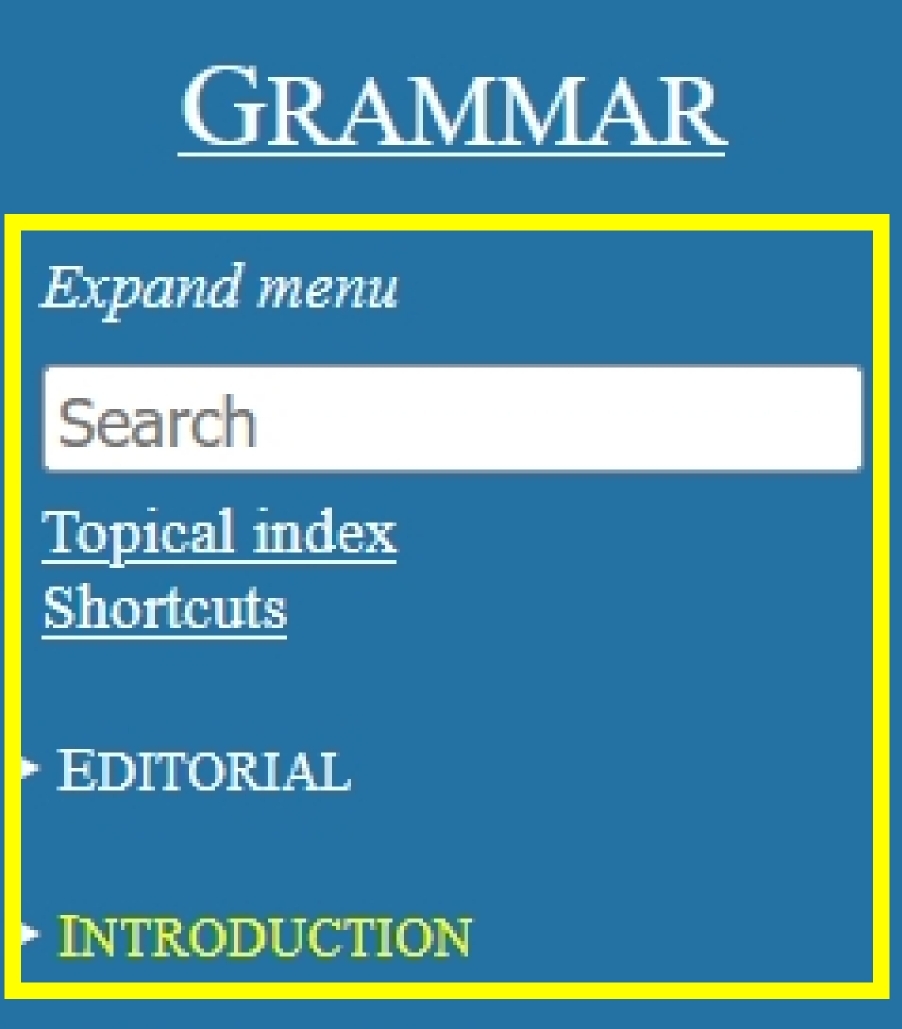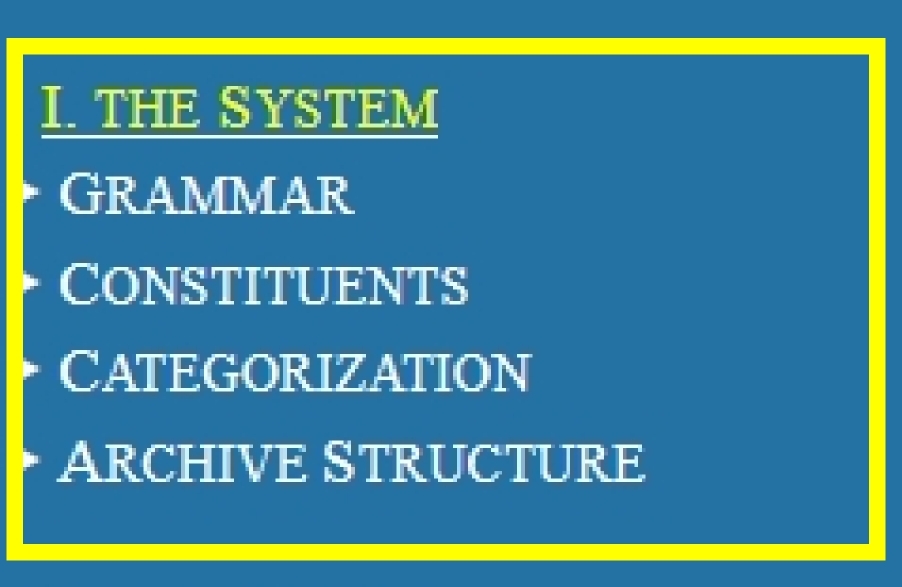Back to top: Website overview
PRELIMINARIES
The contents of this section follow a format that is similar for all websites in the system, described in UGR website:
- utilities,
- editorial,
- intoduction to this particular website.
The details for a hands-on operation of the system are given in the Digital Operation Manual.
| 
|
Back to top: Website overview
I. THE SYSTEM’S CONFIGURATION
A description of the structural organization of the Urkesh Global Record, this section gives a series of definitions of the critical elements that constitute the grammar as a system.
- The very concept of "grammar" is defined as a structural configuration that goes well beyond the statement of a set of rules.
- The constituents are the building blocks of the system, and they are defined by sets of reciprocal oppositions.
- The specifics of what each constituent actually is are found in a categorization system that defines variables and variants.
- A particular aspect of the archaeological record is the close interaction between the constituents and the archive structure.
|
| 

|
Back to top: Website overview
II. EPISTEMICS
A grammar is a tool of choice for articulating and conveying knowledge, the two main characteristicss of epistemics. It is in this light that I view the archaeological record, from three distinct points of view:
- the matrix: how the data are first found in their disaggregated state within the grip of the soil;
- the structuring: how the data are then assembled independently of the excavation process;
- the re-structuring: how the data are finally preserved and presented.
| 

|
Back to top: Website overview
1. The matrix: Stratigraphy
The data emerge from an amorphous matrix where they have come to rest as the result of multiple cultural and natural forces, and over very long periods of time.
In a few cases, the original state is preserved, and we can see the data in their primary functional aggregation. The most obvious case obtains when several walls are seen to constitute a room or a whole building. Another case is that of objects laying on the same floor level, or contained with a pit. These aggregates may be seen as portions of the otherwise disaggregate universe as it is uncovered by the excavation.
For the most part, the data show no structural relationship to each other – i. e., they do not reflect their original functional setting. Their primary definition is thus tied to their findspot and their association with the other elements with which they are in contact. This process is subsumed under the concept and the practice of stratigraphy.
Back to top: Website overview
2. Structuring: Typology and integrative
Once excavated, data can be assembled into meaningful wholes according to two distinct criteria.
The first criterion looks at data depending on their intrinsic qualities: we construct typologies on the basis of inner-referential attributes, i. e., attributes that refer exclusively to the data as such, e. g., shape or material for ceramics, iconography for glyptics, paleography or linguistic analysis for texts.
The second criterion looks at the data with a view to integrate them into a broader picture, in terms of a variety of extra-referental attributes: these include comparaison with data from other excavated sites; analysis of materials with techniques such as Carbon 14 analysis; confrontation with the broader historical framework as defined by textual data.
Back to top: Website overview
3. Re-structuring: Conservation and presentation
Archaeological data present a special problem when it comes to preservation. This is due to the double fact that
- the excavation process entails by necessity the need to sacrifice certain elements in order to expose others (hence, they cannot be preserved), and
- what is not sacrificed must be immediately conserved
in order to avoid its deterioration.
It is for these reasons that archaeological preservation must be inscribed in the excavation strategy, and is therefore part of the grammar. One must indicate the reasons behind the determination as to the disposition of any given element so as to make explicit the nature of the conservation process.
Back to top: Website overview
III. HERMENEUTICS
Hermeneutics may be seen as the search for values: the knowledge which epistemics has articulated and conveyed is now received as a springboard for the appropriation of what stands behind the known, what triggered originally a response and can do so again for us today.
The role of hermeneutics at the time of excavation is limited, bult important, and attention for the “inheritors” must be inscribed already at the level of grammatical analysis.
Back to top: Website overview